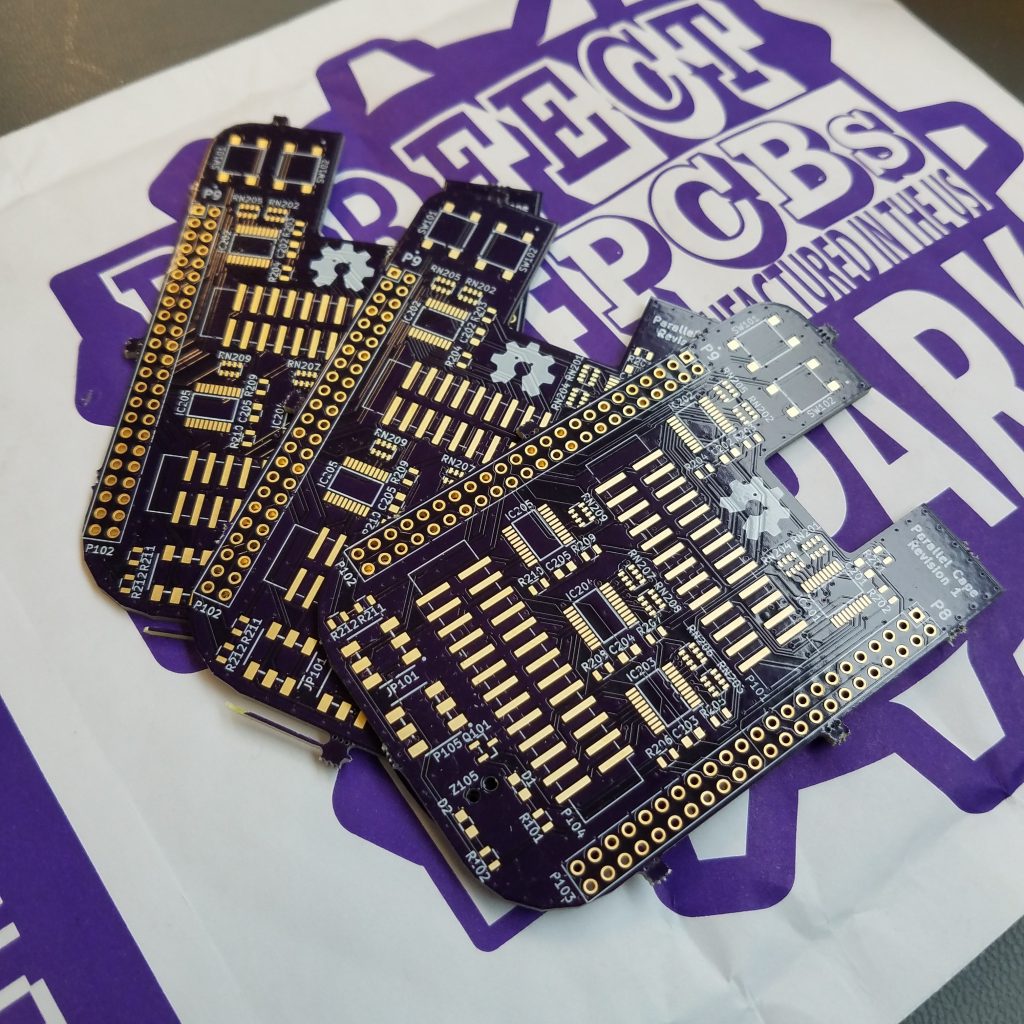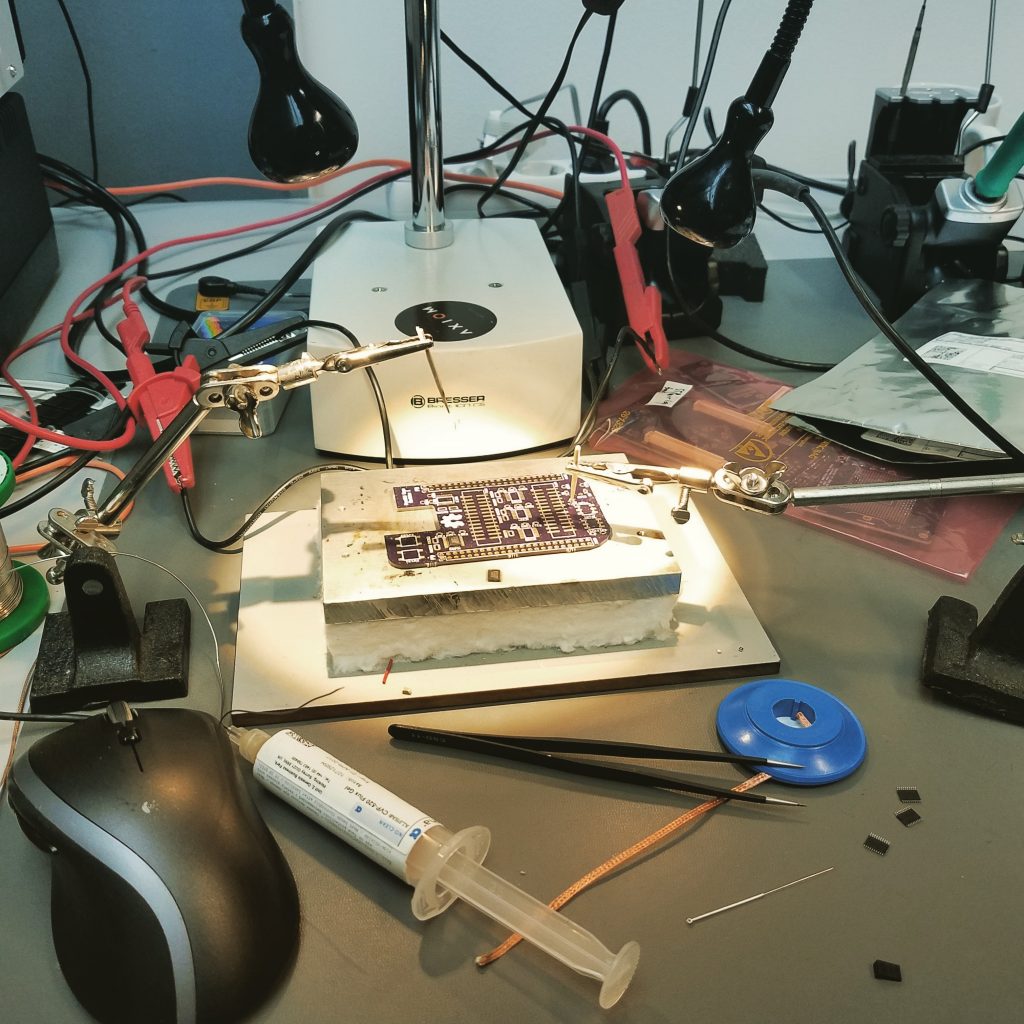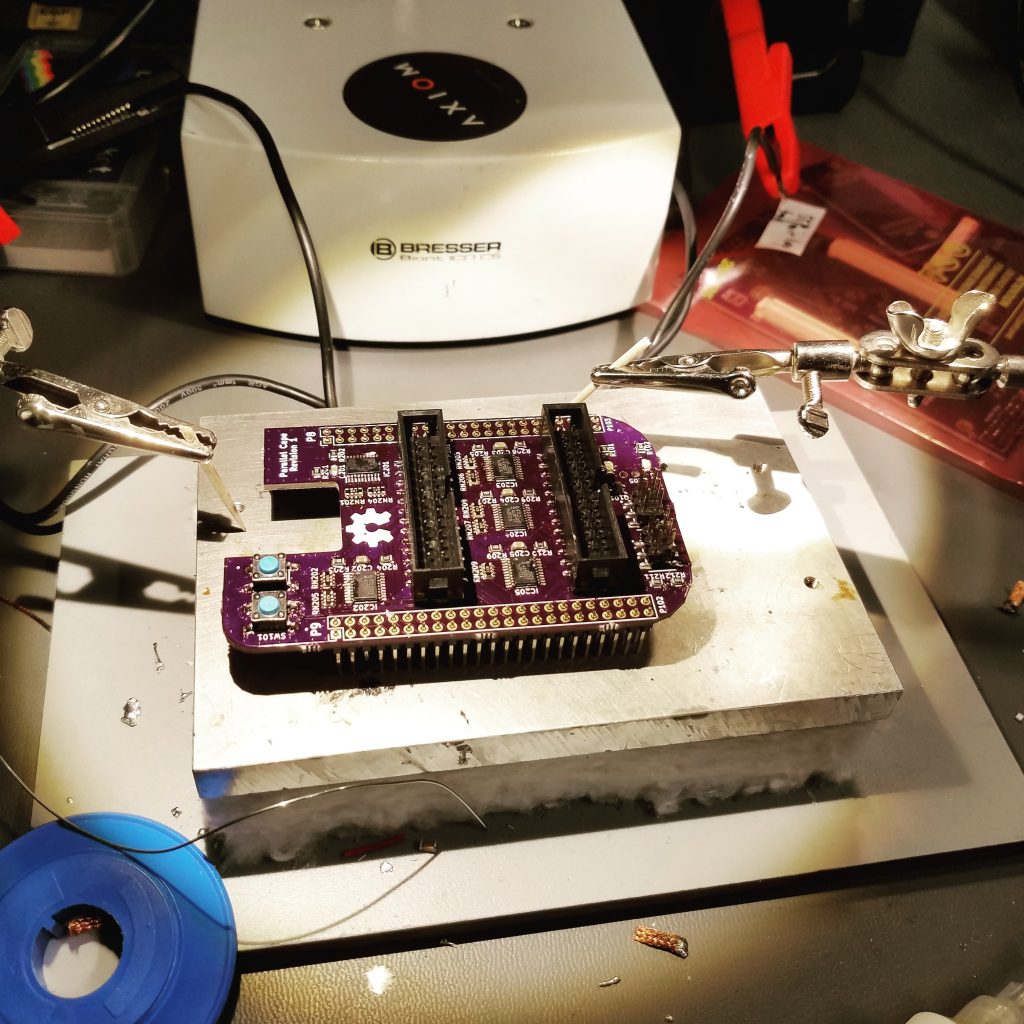 3 minutes read
3 minutes readIn this blog post, I will present you my latest project: The first open source hardware (OSH) parallel port cape for the BeagleBone.
The goal of this project is to make Machinekit easier to use for a broader audience and to provide a turnkey control solution for CNC machines.
The Operator GUI will run on Windows, Linux, Mac, and Android.
New office and equipment
Recently, I re-discovered my interest in creating electronics. Since I studied electronic engineering I have the background to design and develop electronics, but in the recent years, I have been more involved in writing software.
A major factor in my rediscovery of electronics engineering is definitely my recent move into a new co-working space, the Factory Hub in Vienna. The hub is primarily targeting startups and entrepreneurs working with hardware.
Equipment to get started with electronics engineering is usually expensive when you are starting out, especially if that's not your main profession. However, the Factory Hub provides shared access to all the equipment to prototype and build electronics.
Moreover, I share space and equipment with the Apertus AXIOM team which further fostered my interest in open source hardware.
Uniting Machinekit and Hardware
In the last years, multiple people created BeagleBone capes for Machinekit. Some to be used with 3D printers and others to be used to build CNC machines.
However, what's in my opinion missing is a good turkey or semi-turnkey solution. Pretty much all capes for Machinekti that I have seen so far are either targeted for a specific application (e.g. inside a product) or lack software support at all.
Therefore, I have the idea of bringing it all together. I have been working on the software side of Machinekit for several years now and I also, have a background in electronics engineering - so why not create something that brings software and hardware together?
I decided to start by creating something that is generally useful when it comes to Machinekit. A cape that works as an interface for parallel port (DB25) and IDC/HDR26 connectors.
This cape should also serve as my personal prototyping platform my project of bringing electronics, software, and mechanics together in one easy-to-use package.
A first Prototype
In the last few weeks, I have been working on the first prototype for this new cape. Including schematic design, sourcing of parts and layouting the PCB.
Last week I finally received 3 purple PCBs from OSH park.

OSH Parallel Port PCBs
And on Friday I assembled them for testing.

OSH Parallel Port Cape before assembly
As you can see, I decided to use IDC26 connectors on the cape itself, with the option to use IDC26 to DB25 adapters. The idea behind this design is to make panel mounting of the DB25 connectors possible.

OSH Parallel Port Cape assembled
As probably every prototype, the design is not perfect at the moment. Especially the placement of some components is suboptimal when it comes to including the PCB inside a housing.
However, I tested the design and it works driving a small CNC mill.
Becoming a Semi-Turnkey Solution
The idea of this project is to build a semi-turnkey solution based on Machinekit. The device will ship preinstalled with Machinekit and some example configurations.
The GUI will be based on QtQuickVcp and run on Windows, Linux, Mac, and Android. The great thing about the BeagleBone
is that it works plug and play, no need to install anything (except a driver on Windows).
This device should give users a far lower entry barrier for using Machinekit and most importantly it will be ready to be used in other products.
Further Steps
Before I can start producing an selling the cape, as well as the turkey solution (any ideas for a name?) following things, need to be completed:
- Another iteration of the layout and component placement.
- Finding a suitable housing.
- Creating panels.
- Releasing the design on GitHub.
And of course, I also need to release my new webstore.
Conclusion
In this blog post, I outlined my recent work on a new OSH cape for the BeagleBone.
Moreover, I explained my intentions behind the project and what further steps need to be completed before I can start selling the new hardware.
I hope you have enjoyed this blog post and please stay tuned to hear more.
Your
Machine Koder